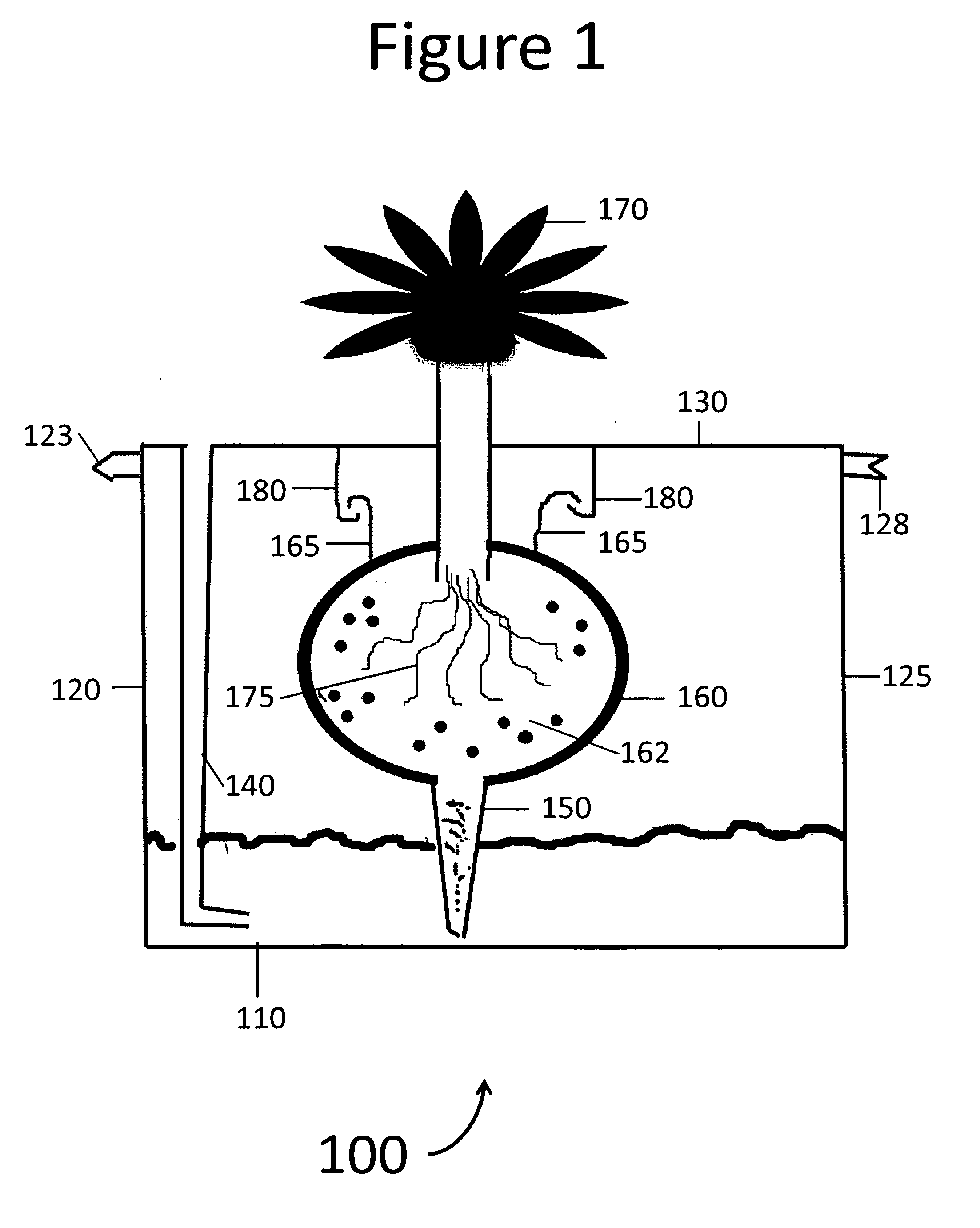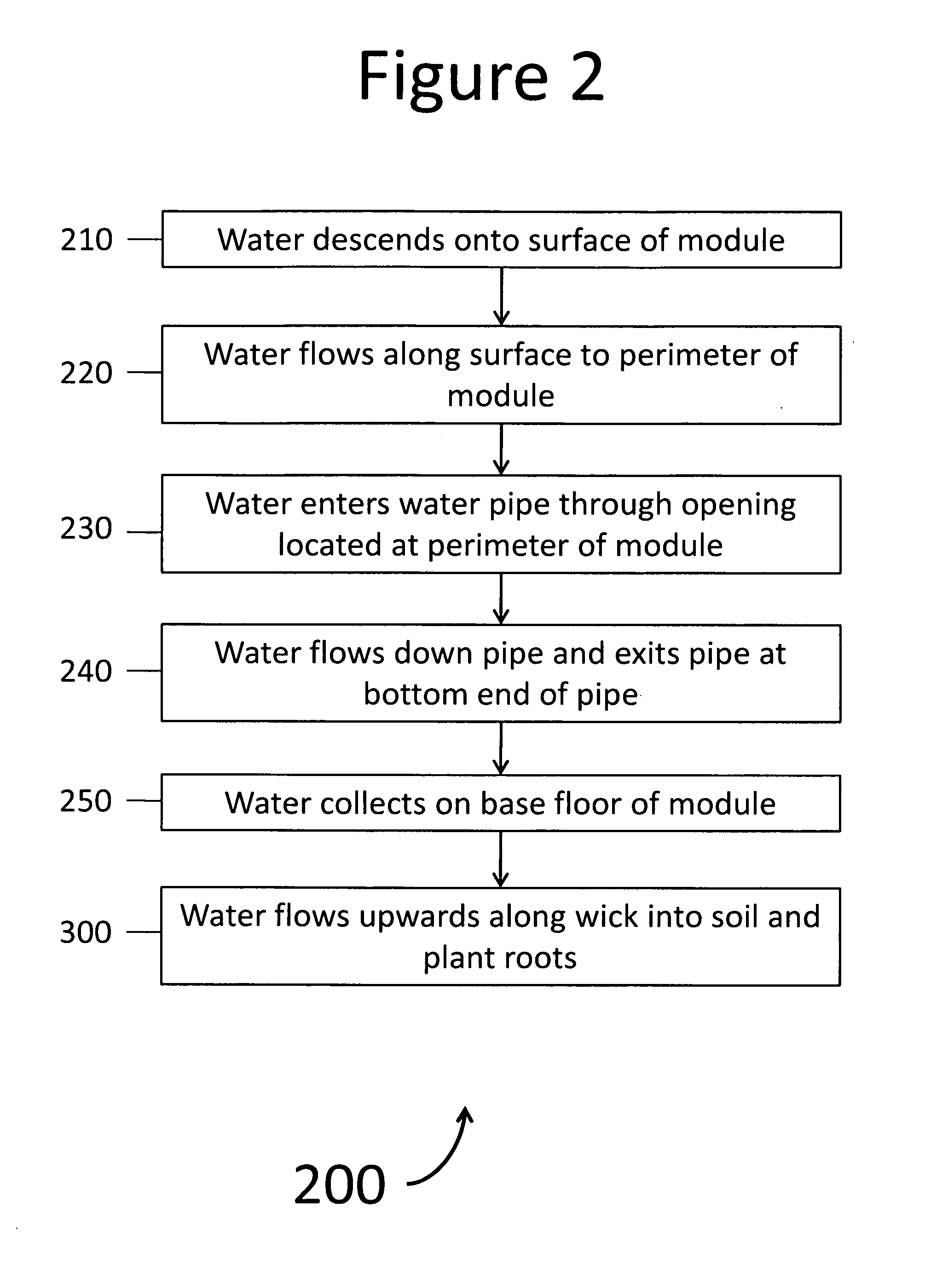Systems for roof irrigation, including modular apparatus with sub-irrigation technology, and methods for installation and maintenance of systems
a technology for irrigation systems and roofs, applied in mechanical apparatus, operating means/releasing devices of valves, manufacturing tools, etc., can solve problems such as significant investment, damage to roof integrity, and difficult repair of bulky systems, and achieve the effects of nourishing vegetation, eliminating soil nutrients, and easy replacemen
- Summary
- Abstract
- Description
- Claims
- Application Information
AI Technical Summary
Benefits of technology
Problems solved by technology
Method used
Image
Examples
Embodiment Construction
[0034]FIG. 1 illustrates a modular apparatus for an irrigation system 100 according to an embodiment of the present invention. The modular apparatus for an irrigation system 100 includes a base floor 110, a left side wall 120, a right side wall 125, a connecting clasp 123, a receiving clasp 128, a top surface 130, a water pipe 140, a wick 150, a nutrient bag 160, a plant 170, and surface hooks 180. The nutrient bag 160 further includes bag hooks 165.
[0035]The base floor 110 is adjoined to left side wall 120 along its left edge and is adjoined to right side wall 125 along its right edge. A connecting clasp 123 is affixed to the left side wall 120. A receiving clasp 128 is affixed to the right side wall 125. The top surface 130 intersects with the left side wall 120 and the right side wall 125. The base floor 110, left side wall 120, right side wall 125, and top surface 130 form a water retention chamber, within which water may be stored. The receiving end of the water pipe 140 is loc...
PUM
| Property | Measurement | Unit |
|---|---|---|
| impermeable | aaaaa | aaaaa |
| permeable | aaaaa | aaaaa |
| time | aaaaa | aaaaa |
Abstract
Description
Claims
Application Information
 Login to View More
Login to View More - R&D
- Intellectual Property
- Life Sciences
- Materials
- Tech Scout
- Unparalleled Data Quality
- Higher Quality Content
- 60% Fewer Hallucinations
Browse by: Latest US Patents, China's latest patents, Technical Efficacy Thesaurus, Application Domain, Technology Topic, Popular Technical Reports.
© 2025 PatSnap. All rights reserved.Legal|Privacy policy|Modern Slavery Act Transparency Statement|Sitemap|About US| Contact US: help@patsnap.com



